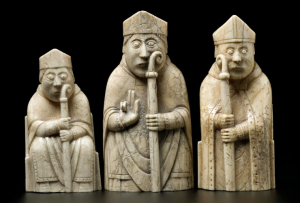


The chess engines of 1960s and 1970s failed to compete with top chess players. Belle would go on to become to first chess engine to receive a Master rating two years later.Ĭlosing the gap (1960s - 2000s) Early competition This is also aided by the fact that Belle held both opening and ending database's, greatly aiding the hardware speed. In 1978 a chess engine named Belle would win the North American Computer Chess Championship run by the Association for Computing Machinery, the engines special hardware allowed it to analyze around thirty million positions in three minutes. This is commonly referred to as Moore's law, and still holds true today.Ĭhess specific hardware also became prominent for chess engines in this time. In 1965 Gordon Moore observed that transistor count in computers had been doubling every two years, increasing hardware speed at an exponential rate. Previously the greatest limiter people like Turing and Dietrich had to face, hardware advanced at an astonishing rate. Most notably previous World Chess Champion Mikhail Botvinnik, who wrote several papers on the subject, specifically related to move selection techniques. These included.ĭuring this time certain chess grandmasters would also devote themselves to the improvement of chess programming, with their advanced knowledge of the game. Major improvements to this algorithm would be developed specifically for chess programming, with the main goal of increasing search depth.

This algorithm, initially proven in 1928 by John von Neumann, focuses on maximizing one players score while minimizing the others. The most iconic game algorithm of all, the Minimax algorithm and its alpha-beta pruning optimization, was and remains key to chess programming and optimization.
WHO INVENTED CHESS SOFTWARE
The rapid advancement of computing in the 1960s and 1970s was key in increasing chess engine strength, both drastic software and hardware innovations lead to stronger engines. The rise of chess engines (1960s - 1970s) Capable of playing an entire game, this engine would mark the real beginning of chess computing. The engine was built for the IBM 704 mainframe, and took around eight minutes per move. įinally, in 1957 an IBM engineer named Alex Bernstein created the world's first fully automated chess engine.
WHO INVENTED CHESS FULL
The algorithm ran on the Ferranti Mark 1, the first commercially available computer, and although lacking the power to play a full game would serve as a proof of concept for chess computing. In 1951 a close colleague of Turing, a man named Dietrich Prinz, would manage to create and implement a basic chess algorithm that was capable of solving mate in two. Turing would test his algorithm by hand, and although the algorithm itself was weak, Turing and Shannon had laid the foundation of greatness. One year later, Alan Turing would create the first computer chess playing algorithm, yet the hardware at the time lacked in power. In 1949, Claude Shannon would publish a paper detailing a program that could potentially play chess against a human. Two men, Alan Turing and Claude Shannon pioneered these innovations, and come the end of WW2 both would pick up an interest in programming a chess engine. World War II would lead to astonishing technological breakthroughs, the largest of these of course being the invention/creation of the computer. The beginning of chess computing (1940s - 1950s) El Ajedrecista marked the first actual chess engine, and created lots of excitement around the field in general. The machine was capable of checkmating the black king (played by a human) every time, and able to identify illegal moves. El Ajedrecista could play an endgame with white, in which white has a king and rook, while black only has a king. Unlike the Mechanical Turk, El Ajedrecista was actually the first autonomous machine capable of playing chess. The first real instance of a chess computer would appear in 1912, with an automaton named El Ajedrecista built by Leonardo Torres y Quevedo.


 0 kommentar(er)
0 kommentar(er)
